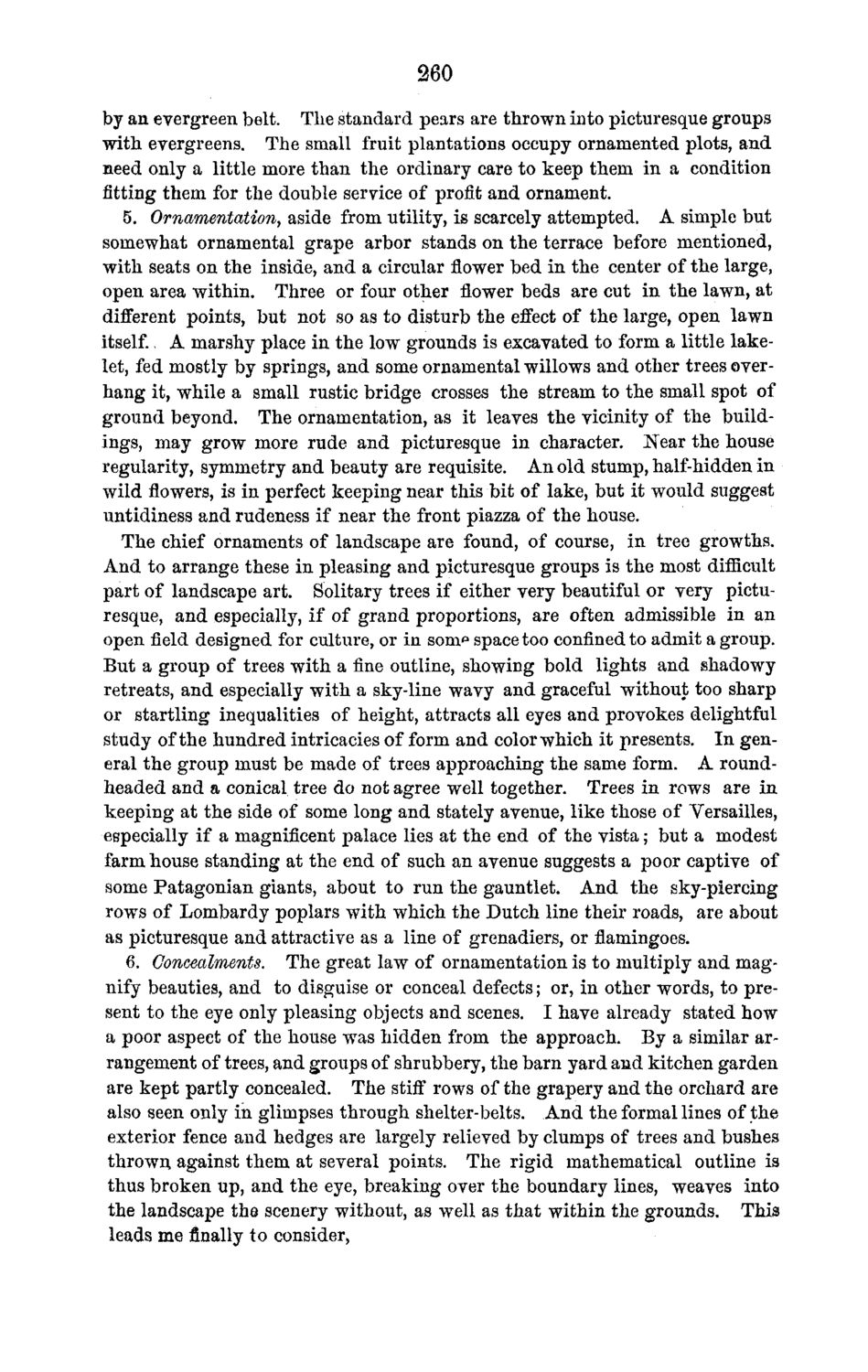| |
| |
Caption: Board of Trustees Minutes - 1870
This is a reduced-resolution page image for fast online browsing.

EXTRACTED TEXT FROM PAGE:
260 by an evergreen belt. The standard pears are thrown into picturesque groups with evergreens. The small fruit plantations occupy ornamented plots, and need only a little more than the ordinary care to keep them in a condition fitting them for the double service of profit and ornament. 5. Ornamentation, aside from utility, is scarcely attempted. A simple but somewhat ornamental grape arbor stands on the terrace before mentioned, with seats on the inside, and a circular flower bed in the center of the large, open area within. Three or four other flower beds are cut in the lawn, at different points, but not so as to disturb the effect of the large, open lawn itself.. A marshy place in the low grounds is excavated to form a little lakelet, fed mostly by springs, and some ornamental willows and other trees overhang it, while a small rustic bridge crosses the stream to the small spot of ground beyond. The ornamentation, as it leaves the vicinity of the buildings, may grow more rude and picturesque in character. Near the house regularity, symmetry and beauty are requisite. An old stump, half-hidden in wild flowers, is in perfect keeping near this bit of lake, but it would suggest untidiness and rudeness if near the front piazza of the house. The chief ornaments of landscape are found, of course, in tree growths. And to arrange these in pleasing and picturesque groups is the most difficult part of landscape art. Solitary trees if either very beautiful or very picturesque, and especially, if of grand proportions, are often admissible in an open field designed for culture, or in somp space too confined to admit a group. But a group of trees with a fine outline, showing bold lights and shadowy retreats, and especially with a sky-line wavy and graceful without too sharp or startling inequalities of height, attracts all eyes and provokes delightful study of the hundred intricacies of form and color which it presents. In general the group must be made of trees approaching the same form. A roundheaded and a conical tree do not agree well together. Trees in rows are in keeping at the side of some long and stately avenue, like those of Versailles, especially if a magnificent palace lies at the end of the vista; but a modest farm house standing at the end of such an avenue suggests a poor captive of some Patagonian giants, about to run the gauntlet. And the sky-piercing rows of Lombardy poplars with which the Dutch line their roads, are about as picturesque and attractive as a line of grenadiers, or flamingoes. 6. Concealments. The great law of ornamentation is to multiply and magnify beauties, and to disguise or conceal defects; or, in other words, to present to the eye only pleasing objects and scenes. I have already stated how a poor aspect of the house was hidden from the approach. By a similar arrangement of trees, and groups of shrubbery, the barn yard and kitchen garden are kept partly concealed. The stiff rows of the grapery and the orchard are also seen only in glimpses through shelter-belts. And the formal lines of the exterior fence and hedges are largely relieved by clumps of trees and bushes thrown against them at several points. The rigid mathematical outline is thus broken up, and the eye, breaking over the boundary lines, weaves into the landscape the scenery without, as well as that within the grounds. This leads me finally to consider,
| |